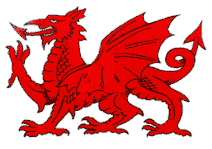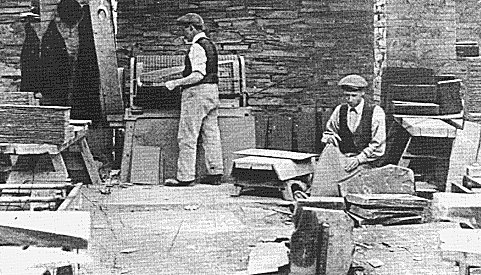The Slate Industry of North and Mid Wales

Archive
views of the Slate Industry - Page 2.
The following photos are by courtesy of Gwynedd
Archives Service

A view of
Porthmadog harbour in about 1900. The bridge over the
Afon Glaslyn is in the centre and beyond it are the
extensive wharves where slate was transhipped onto sailing
ships. The narrow gauge Ffestiniog Railway had a
minerals branch which passed over the bridge from Harbour
station and can be seen curving away to the wharves on the
right of the photo.

Llechwedd
Quarry in Blaenau Ffestiniog in about 1900. The two
mills are both powered by centrally positioned
waterwheels. The run off from the top one powering the
lower. The row of cottages in the centre now forms
part of the award winning tourist attraction.

Before the use
of compressed air drills, the tool used to drill holes in
rock was a Jwmpah, this consisted of a rod with a weight at
the top. The rod was dropped and twisted at the same
time, needless to say progress was painfully slow.

Inside a
dressing shed. The man in the centre is trimming the
slates to size using a belt driven Greaves rotary
dresser. Some of these machines are still in use
today. His partner on the right is splitting the
slates.

The Hunter saw
was a fearsome machine used to saw blocks of slate. The saw
teeth were able to be replaced individually. Such
machines added greatly to the dangers of dust inhalation.

Parc
Quarry near Croesor specialised in the production of slate
slabs. Here a consignment is seen stacked ready for
despatch to Porthmadog by the Croesor Tramway.
Next page: Archive gallery page 3
Back to the index page





